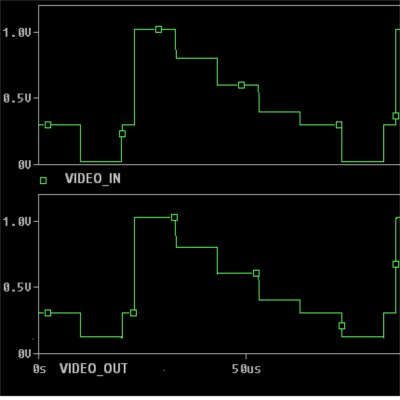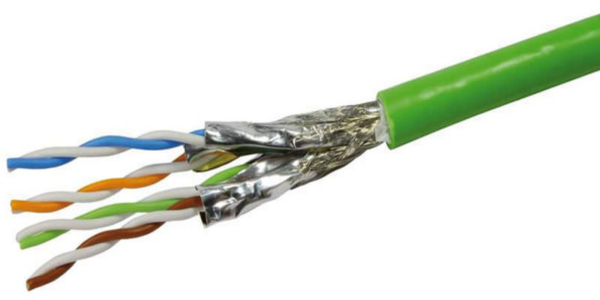Transmitting video signals over long distances can be tricky. Cheap co-ax cables won’t do the job. You either need amplifiers along the path, or need to use expensive, high quality shielded co-ax cables – both of which can end up costing a lot. [Maurizio] built a low cost solution to transmit video over long distances using twisted pair cables.
The system is cheap and uses readily available parts. The idea is to convert the video signal into a differential output using a pair of op amps and transmit them over a pair of twisted pair wires, then extract the signal at the receiving end using another amplifier.
 A differential amplifier usually requires a dual-polarity power supply, which may not be available when adding this upgrade to an existing system. To over come this limitation, [Maurizio] uses a bias voltage equal to half of the power supply value. This bias voltage is added to the non-inverting amplifier signal, and subtracted from the inverting amplifier signal. The resultant differential signal is then fed into the twisted pair cable through impedance matching resistors. At the receiving end, a single amplifier receives the differential signals and outputs a signal that corresponds to the original video signal.
A differential amplifier usually requires a dual-polarity power supply, which may not be available when adding this upgrade to an existing system. To over come this limitation, [Maurizio] uses a bias voltage equal to half of the power supply value. This bias voltage is added to the non-inverting amplifier signal, and subtracted from the inverting amplifier signal. The resultant differential signal is then fed into the twisted pair cable through impedance matching resistors. At the receiving end, a single amplifier receives the differential signals and outputs a signal that corresponds to the original video signal.
This symmetrical configuration renders the system immune to external noise. The design was tested for transmitting video on inexpensive CAT-3 twisted pair wire. According to him, when transmitting on 300m of wire, good quality color video was displayed on a monitor with an NTSC input. He used LMH6643 op-amps for this experiment, but other devices with similar characteristics can be used. Here’s a useful PDF document that discusses signals, cables and connections.
If you want to check out more of [Maurizio]’s work, see how he figured out how to send serial data from Excel.












